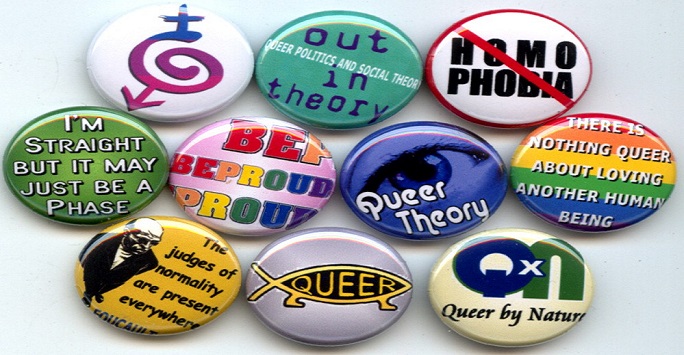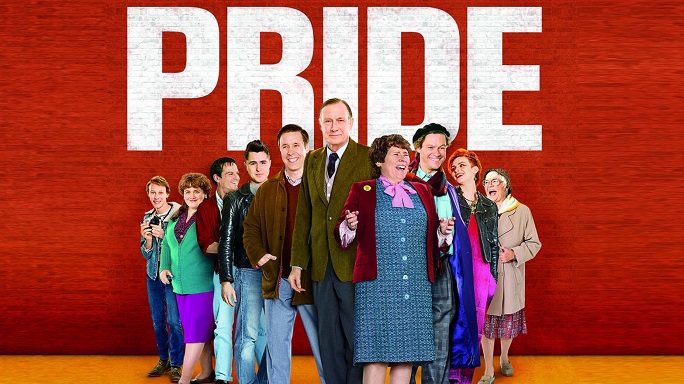Pride in Sociology
Posted on: 11 February 2021 by Dr Mike Homfray, University Teacher in the Department of Sociology, Social Policy and Criminology in Blog

In connection with LGBT+ History Month, Dr Mike Homfray from the Department of Sociology, Social Policy and Criminology has arranged a showing of the film Pride, together with a guest speaker, Paul Fairweather, who has been involved with a range of LGBT+ activism in Manchester for a number of years.
It also coincides with the launch of a new second-year course, Sexualities in Society. This will look at sociological insights into the study of sexuality, covering both theories and concepts related to the sociology of sexualities, key issues relating to policy areas such as education and employment, and current controversies such as the growth in ‘hate crime’ and the perceived clash of rights of sexuality and religion. It is the first time for some years that a standalone module focusing primarily on the topic of sexualities has been run within Sociology at Liverpool, and with 66 students having registered for its first run, should be a valuable addition to the choices available
Historically, sociology has had something of a mixed record in relation to sexuality as a social division. Born out of a desire to analyse social change as modern capitalism emerged, the founding fathers of the discipline - men of their era - would have considered sexuality as something purely biological and individual, and while the concept of a ‘homosexual identity’ had begun to emerge, within the UK it was branded as something deviant and indeed, from 1885 to 1967, illegal in the case of men. It is perhaps not surprising that much post-war sociology which looked at homosexuality tended to work from within the concept of ‘deviance’ and indeed, one of the most-quoted studies, still – no doubt because of its breathtaking avoidance of today’s ethical restrictions – was an American study called ‘Tearoom Trade’!
In addition, the trinity of class, race and gender has often eased out other social divisions into a perceived second-tier importance within the discipline, and this is something which sociologists focusing on sexualities have wanted to reverse.

(Pride film artwork, produced in 2014 it is a British historical comedy-drama film written by Stephen Beresford and directed by Matthew Warchus.)
The film Pride immediately raises two interesting areas of sociological study. Focusing on a small number of activists who set up a London-based group called Lesbians and Gays Support the Miners, the film tells of their activities in raising money for, and supporting, a striking mining community in south Wales during the miners' strike of 1984 and 1985. While same-sex relationships for men were no longer criminal, it remained legal to dismiss someone from their job because of their sexuality, and the activities of the police were notoriously hostile – something which the lesbian and gay group and the mining community immediately recognised they had in common. The film is based on a true story and doesn’t hide the fact that there were homophobic attitudes within the mining community, but the work of the lesbian and gay group was recognised in the support given by the NUM for legal equality and their participation in the London Pride march, together with brass bands, the following year.
Sociological analysis can view this as an example of two ostensibly different social groups recognising that they had things in common in terms of the attitude of the state towards them and their call for recognition and equality – both experienced direct government activity which opposed their demands. For gay and lesbian people within communities which had traditionally been socially conservative, the work done by the support group was a way of highlighting the intersection which can occur when social class and sexuality are considered together. In addition, both the trade union movement and the LGBT+ movement are examples of social movements, and sociological analysis has been able to provide a theoretical insight into the activities of networks working for social change.
This will be an aspect of the new course, considering the application of a range of social movement theories to the LGBT+ movement, and how we can make sense of the emergence and rise of this movement. The linkage between the historical oppression of gay people and the movements which rose up to demand and work for change, are clear – it will be interesting to see what the future brings in a climate where, in this country, legal equality has been largely won. The question remains whether this automatically leads to the eradication of what sociologists describe as heteronormativity – the organising of society with an underlying assumption that people are heterosexual – or, indeed, whether the boundaries and categories which enabled gay and lesbian people to organise and work for social change themselves require challenge, and whether a transgressive ‘queer’ multiplicity of identities should take their place? These are the sort of questions which sociologists are grappling with today.

Dr Mike Homfray
University Teacher and module leader of Sexualities in Society, a second-year module offered within the Department of Sociology, Social Policy and Criminology
If you are interested in studying within the Department of Sociology, Social Policy and Criminology, visit our study pages.
Keywords: Sociology, Pride, LGBT+, LGBT History Month, SSPC, Sexualities, Society, Activists.